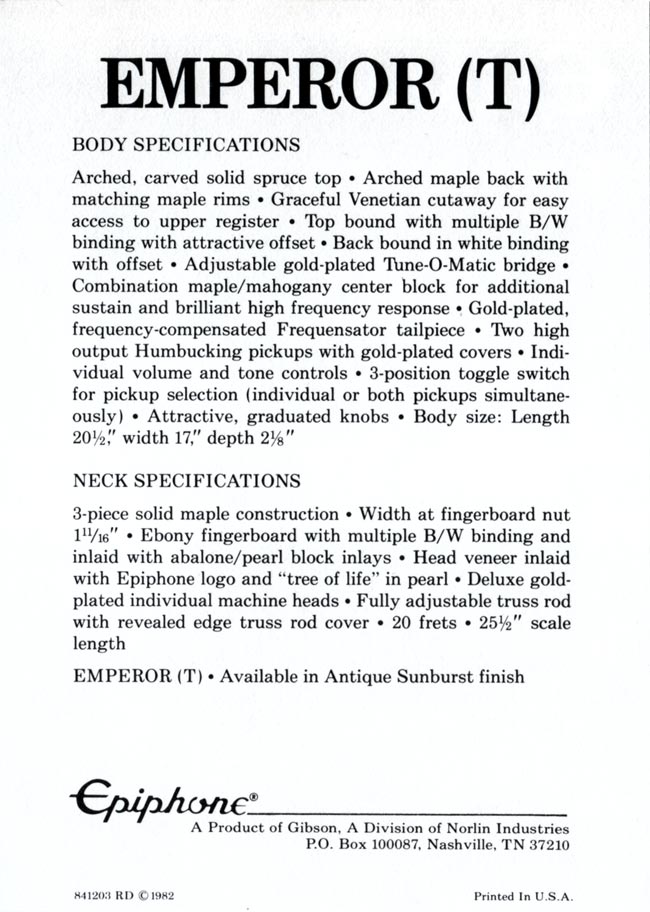
The Epiphone Emperor had been produced as an electric guitar since 1951, though had undergone very many changes in this time. The original Stathopoulos-period Epiphone guitar was a three-pickup, full-body guitar; when Gibson reissued the model initially in 1959, it became a thinline. Gibson produced the guitar through to 1968 at their legendary Kalamazoo plant, alongside the numerous high end Gibson jazz guitars.
When Gibson moved Epiphone manufacture to Japan circa 1970, the high end models like the Emperor were discontinued; however in 1982, they were reissued for a second time, both as a thinline model (shown below) and a full body depth model (here), like the early 1950s original.
The body depth was one similarity to the 50s (Stathopoulos) and 60s (Gibson) Emperor versions, but other remaining features that to some extent defined the model were the pearl block inlays with abalone triangles, Frequensator tailpiece, and 'tree-of-life' headstock motif.
The body shape had changed somewhat, now with less-exaggerated waist, two rather than three pickups and an ebony rather than rosewood fretboard.
In 1963, the Emperor had the same list price as the Super 400 CES. In 1982 the list price for the Japanese thinline Emperor T was $899.95, whilst the Super 400 CES was listed at $2499!

$8695
$7500
$6200
$3895
$2950
$1020
$1000
$1000
$975
$951